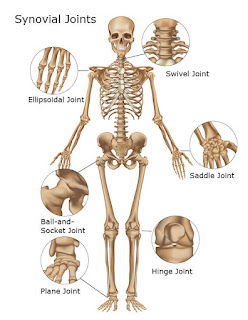Blog Article/Post Caveat (Read First Please: Click the Link)
Many who teach the restraint/manipulation skills in martial arts will tell us that the fundamental principles of this art and skill, restraint/manipulation, are what people exploit to make the system work. They will name them off as, “ball-n-socket, hinge, pivot, gliding and saddle joints. As I began to study about keystone principles, see previous posts, it suddenly occurred to me that maybe there were keystone joints in the body. There are:
There are three main types of joints; Fibrous (immovable), Cartilaginous (partially moveable) and the Synovial (freely moveable) joint.
We spend a lot of time learning how to use the ‘freely movable’ joints to our advantage and with this additional understanding we should understand the keystone joints of the body because that is the lowest denominator of the skeletal system of humans, the three types of joints.
Then, understanding that all three of these working together provides our ability to move when muscles, tendons, etc., are triggered to manipulate the skeletal system. All three combined as a whole are used even if we are focusing on a hinge joint because as one joint may be the focus of the skill it is the relational functions of those three main types as well as the particular point, of the six, that get the job done.
Knowing how they all function in telling as to how we would apply our skills for restraint and manipulation to stop another person from doing things we don’t want them to do that may result in harm or death.
On joints:
Joints are formed where bones come together. The six types of synovial joints are the pivot, hinge, saddle, plane, condyloid, and ball-and-socket joints. Pivot joints are found in your neck vertebrae, while hinge joints are located in your elbows, fingers, and knees.
There are six types of freely movable diarthrosis (synovial) joints:
- Ball and socket joint. Permitting movement in all directions, the ball and socket joint features the rounded head of one bone sitting in the cup of another bone. Examples include your shoulder joint and your hip joint.
- Hinge joint. The hinge joint is like a door, opening and closing in one direction, along one plane. Examples include your elbow joint and your knee joint.
- Condyloid joint. The condyloid joint allows movement, but no rotation. Examples include your finger joints and your jaw.
- Pivot joint. The pivot joint, also called the rotary joint or trochoid joint, is characterized by one bone that can swivel in a ring formed from a second bone. Examples are the joints between your ulna and radius bones that rotate your forearm, and the joint between the first and second vertebrae in your neck.
- Gliding joint. The gliding joint is also called the plane join. Although it only permits limited movement, it’s characterized by smooth surfaces that can slip over one another. An example is the joint in your wrist.
- Saddle joint. Although the saddle joint does not allow rotation, it does enable movement back and forth and side to side. An example is the joint at the base of your thumb.
Fibrous (immovable) joints: Fibrous joints are connected by dense connective tissue, consisting mainly of collagen. These are fixed joints where bones are united by a layer of white fibrous tissue of varying thickness. These joints have no joint cavity and are connected via fibrous connective tissue.
Cartilaginous (partially moveable): Cartilaginous joints are connected entirely by cartilage (fibrocartilage or hyaline).[1] Cartilaginous joints allow more movement between bones than a fibrous joint but less than the highly mobile synovial joint. Cartilaginous joints also forms the growth regions of immature long bones and the intervertebral discs of the spinal column. Cartilaginous joints allow little movement.
For reference and sources and professionals go here: Bibliography (Click the link)


No comments:
Post a Comment